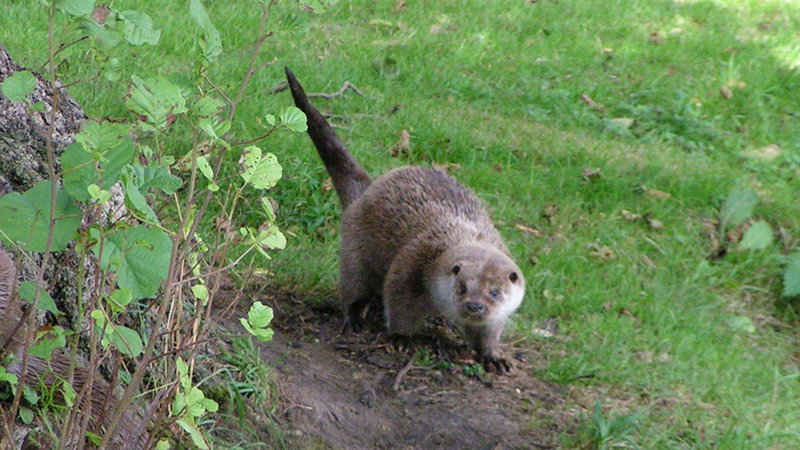Scent communication
Mae'r cynnwys hwn ar gael yn Saesneg yn unig.
Discovering more about the information otters communicate through scent and what social function this performs.
Eurasian otters largely communicate with each other by leaving scent marks (spraint, anal jelly, smears or tars) in prominent locations such as large boulders on river banks. Despite the established use of spraint to survey otter populations and several suggestions about the communicative function of spraint, until recently little was known about the messages conveyed in these scent marks.
Completed research

Eleanor Kean, completed her PhD on this subject supervised by Dr Carsten Müller and Dr Elizabeth Chadwick. Volatiles eluting from the content of otter scent glands were analysed using SPME (Solid Phase Microextraction) and GC-MS (Gas Chromatography Mass Spectrometry). Differences in scent were found between otters of different age groups, sexes and reproductive status (Kean et al, 2011), individual identity and country of origin (Kean et al, 2015).
Currently population monitoring methods for otters describe distribution only. Chemical profiling of otter spraint has the potential to provide more detail such as population size and structure and home range size.
Funded by the Environment Agency and RWE npower. The following kindly provided spraint from captive otters:
- The New Forest Wildlife Park
- Dartmoor Otter Sanctuary
- RSPCA
- The British Wildlife Centre
- Otter Zentrum, Germany
New research
We plan to initiate research looking at non-volatile compounds. We have observed that otters make direct contact with spraint, indicating that non-volatile compounds may play a role in otter communication. If you are a postgraduate student interested in this research, please contact Dr Liz Chadwick or Dr Eleanor Kean.